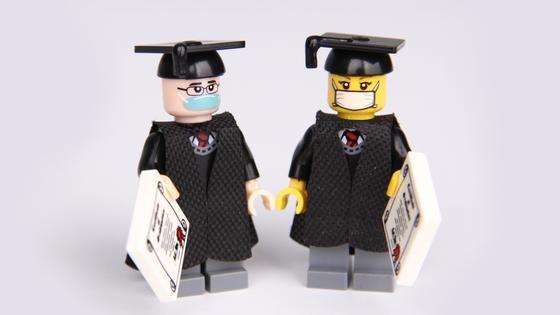An Alternative to Zoom Universities: Blended Learning Method
Despite the aspirations of the leaders of higher education, most US colleges do not plan to reopen in the coming fall. Although initially educational institutions did want to return to the standard in-person teaching regime in coming September, now only 24% are ready to do this.

Statistics and the results of numerous studies show that in online studies students learn only half as much when compared to traditional face to face education. At the same time, virtual education is effective in the same way as classical education providing educational courses are correctly designed. Conventional group discussions on Skype or watching lectures on YouTube are no longer enough. It is also true that today's students complain that they have to pay the full tuition fees for Zoom University as if they were studying in "meat space". College presidents themselves are also worried about this question: students may decide that online education is not worth the money.
In view of all of the above, today the ideal option is the so-called "hybrid learning", in which online and offline (in-person) approaches are combined. This term does not mean the alternation of online and offline courses, as many universities plan to do in the fall of 2020. The essence of blended learning is that each individual course effectively combines elements of online and traditional learning.
A study by Oscar Harmon, William Alpert and Kenneth Kush confirms the efficacy of this approach. They randomly divided students of a microeconomics course into three independent groups: online students, offline students, and those who studied in a blended mode, that is, they watched online lectures, and also met physically once a week in the classroom for in-person discussion of the topics covered.
Thus, it was found that online students performed worse than their offline peers. On average, online students scored 4 points less in the final exam. Moreover, only 54% of online students finished the course fully, compared with 70% of standard in-person students. This difference is not at all attributable to abilities of students, but means of learning, i.e. in-person versus online.
However, the researchers did not find a significant difference between offline education and blended learning. If you look at the results of the final exam, the students of the blended type of education assimilated information as well as the students who were always present in person in the classroom.
However, the researchers did not find a significant difference between offline education and hybrid.
This experiment was conducted long before the COVID-19 pandemic, but nevertheless, the results point to a potential solution for those colleges struggling to comply with the principles of social distancing without compromising the quality of education. In practice, this can be done as follows.
Those classes that meet in-person twice a week can be divided into two groups. Thus, each half of the class will meet once a week for in-person discussion, and spend the rest of the time learning online. Splitting the class in this manner will result in fewer students in class meetings, which helps maintain social distancing. At the same time, professors will spend the same amount of time with the class as before. Accordingly, no changes need to be made to the college's faculty and their teaching schedule.
However, this approach is not equally effective everywhere. For example, it will be difficult to adapt and transfer to blended learning mode to those subjects where there is a need to conduct laboratory work. Yet, in terms of performance, this is still better than conducting courses totally online: this way, students will have access to the laboratory at least once a week.
Blended learning reduces the number of classes that require the personal presence of students, but does not eliminate them. Due to this, students receive a double learning experience - both classic and combined. However, this also requires additional investment from universities. Blended learning may not be a panacea for all the problems of modern education, but today it is the best practice that can help colleges, schools and universities overcome the difficulties of the COVID-19 pandemic.












 How Not to Lose Focus When Learning Everything at Once: The Art of Selective Development
How Not to Lose Focus When Learning Everything at Once: The Art of Selective Development
 Test. What Winter Dessert Are You?
Test. What Winter Dessert Are You?
 What New Skills You Should Start Learning Today
What New Skills You Should Start Learning Today
 Test: What Kind of Ancient Goddess Are You?
Test: What Kind of Ancient Goddess Are You?
 Test: Which Great Woman Would Invite You for Tea?
Test: Which Great Woman Would Invite You for Tea?
 Test: How Well Do You Balance Work and Personal Life?
Test: How Well Do You Balance Work and Personal Life?
